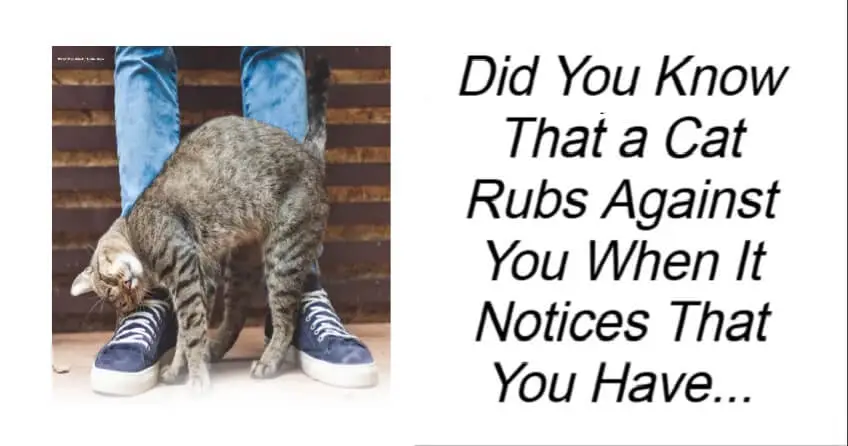Why a Cat Rubs Against You
Cats may not speak our language, but they are constantly communicating. Every gesture, posture, and expression carries meaning. Learning to decode these subtle signals not only strengthens your bond with your cat but also unveils a surprisingly rich and intricate world.
Many of their behaviors, which may seem puzzling—or even amusing—are part of a highly sophisticated language. For example, if your cat appears to ignore you one moment and then rubs affectionately against you the next, he may be claiming you as part of his territory. But what do these behaviors truly mean? Let’s explore this fascinating feline universe together.
Marking Territory: A Message, Not an Accident
If you discover a small puddle of urine on a wall or piece of furniture, you might assume it’s a mistake or a medical issue. In reality, it’s a form of communication. Contrary to popular belief, marking territory isn’t exclusive to unneutered males—females and neutered cats do it too. Think of it as a bulletin board where your cat leaves a scent “message.”
This kind of marking, often done at a higher position, serves several purposes: it signals presence to other cats, establishes territorial boundaries, or conveys emotional states. If your cat detects that another animal has tampered with its scent mark, it may even reinforce it by marking again.
Panting and Licking: A Clever Cooling Strategy
A panting cat? That’s an unusual sight. Unlike dogs, cats don’t use their tongues as their primary method of cooling down. However, in extreme heat—like a sweltering afternoon in Marseille—some cats may pant to regulate their body temperature.
They have another trick as well: licking their fur. The evaporation of saliva creates a brief cooling effect, similar to wiping a damp cloth over your forehead on a hot summer day.
Rubbing Against You: A Gesture of Affection and Ownership
Does your cat rub against your legs the moment you walk through the door? This behavior is much more than just a greeting. It’s a blend of affection, recognition, and—most importantly—marking.
The areas your cat rubs against you—his flanks, chin, and the base of his tail—are rich in pheromone glands. These invisible chemical signals act as an olfactory identity card. By leaving his scent on you, your cat is essentially saying, “This human belongs to me.”
Pinned-Back Ears and Shifty Eyes: A Sign to Back Off
If your cat’s ears are flattened, his eyes are half-closed, and he slightly turns his head away, take note—these are signals of irritation or agitation. It’s his polite way of saying, “Not now, leave me alone.”
If his whiskers are pressed tightly against his cheeks, he’s more frightened than aggressive. In this case, give him space—this is not the moment for cuddles.
Stamping Before a Leap: A Hunter’s Ritual
Ever seen your cat suddenly freeze, lock eyes on a target (a fly, a toy, or even a moving sock), and start stamping his front paws as if preparing for an Olympic jump? This trembling motion is not a malfunction—it’s a moment of intense concentration before the pounce.
His pupils dilate, his ears twitch at the slightest sound, and he carefully gauges the distance—just like a skilled martial artist planning his next move. This ritual, inherited from his wild ancestors, showcases his innate agility and precision.
You’ve just read, Why a Cat Rubs Against You. Why not read Manager Had To Hire A New Employee.

